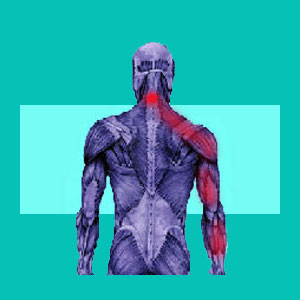
Arm pain from a herniated disc is possible to experience if the herniation occurs in the middle to lower cervical intervertebral levels. In most instances, the appendage discomfort is blamed on a compressive neuropathy enacted by the bulging disc. This scenario is a very popular diagnosis used to explain symptoms which exist in the shoulder, upper arm, lower arm, hand or fingers. There is often accompanying pain in the upper back or neck, but sometimes the symptoms exist in the limb alone.
This article profiles arm pain experienced in direct relation to a cervical intervertebral protrusion or rupture. We will examine why pain might exist in the arm or hand and how it can be diagnosed correctly and treated.
Arm Pain from a Herniated Disc Causation
There are 3 primary reasons for arm pain which is related to a herniated cervical disc:
Foraminal stenosis is when a spinal nerve root is compressed by the bulging disc as it leaves the neuroforamen. This occurrence is typically also called a pinched nerve. This is the most logical explanation for arm symptoms, as long as the nerve is definitively affected and correlates by location to the symptoms experienced.
Spinal stenosis is when the actual spinal cord is impinged upon by the herniation. This scenario can be very serious in rare instances and might produce a variety of extremely affective and wide ranging symptoms in the upper and possibly lower body regions. Most cervical stenosis will affect the lower body, with weakness and numbness in the legs being commonplace. However, symptoms can occur in the arms or hands, in some patients, either alone or in combination with other expressions.
Chemical radiculitis, induced by an annular tear, may irritate a cervical nerve root, enacting pain in the arm, hand or fingers. This event is usually the result of a ruptured disc which spills nucleus pulposus proteins onto sensitive neurological tissues.
Herniated Disc Arm Pain
Many cases of arm and neck pain are blamed on a prolapsed disc in the neck, but actually are not due to any structural source in the spine. It is vital to know that most intervertebral herniations do not influence the neurological tissues and therefore do not produce pain. In these scenarios, the herniations are incidental to the discomfort.
Some instances of upper back and arm pain can be caused by thoracic outlet syndrome, which typically presents itself as muscular interaction with the nerve center known as the brachial plexus. In other patients, the muscles might interact with the crucial vascular tissues in the region, such as the subclavian artery or vein.
Of course, there are other possible explanations for pain, including regional ischemia, disease processes and the very good chance for an idiopathic causation. A great number of patients have symptoms which seem to come from no definitive source, although most of these sufferers will be labeled with an incorrect diagnosis, since this is the way of the modern dorsalgia treatment sector.
Arm Pain from a Herniated Disc Suggestions
It is very possible to suffer arm pain from a herniated disc and related tingling, numbness and weakness from a physical injury. This is true whether a herniated disc is present or not. However, injuries will heal and should not leave long lasting symptoms in place for months or even years.
Enduring pain syndromes which continue to generate pain, despite treatment, may indicate misdiagnosis. In many of these patients, the herniated disc or cervical degenerative disc disease is nothing more than a scapegoat and receives unneeded therapy, and possibly surgery, resulting in abysmal curative results.
If your upper back and arm pain has not resolved despite various attempts at treatment, you must consider the fact that your pain might not be related to a herniated disc at all. The bulging disc might surely exist, but may be purely coincidental to the symptoms.
If the disc is indeed the true source of pain, curative methods of care should resolve it. Just be sure that your doctor does not have you trapped in a symptomatic therapy regimen with no hope for a cure. This is far more prevalent than you might think. In fact, it is the rule, rather than the exception.
Herniated Disc > Herniated Disc Pain > Arm Pain from a Herniated Disc





